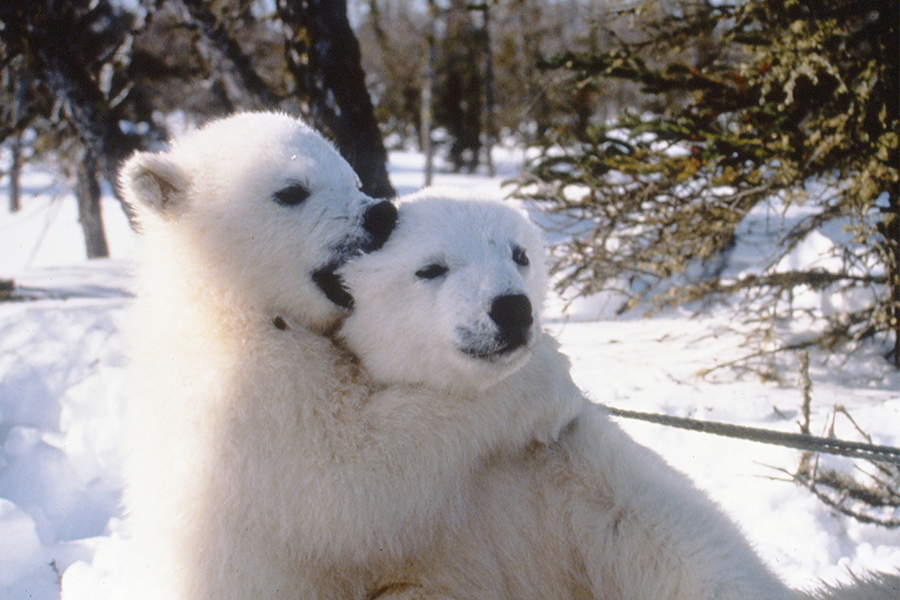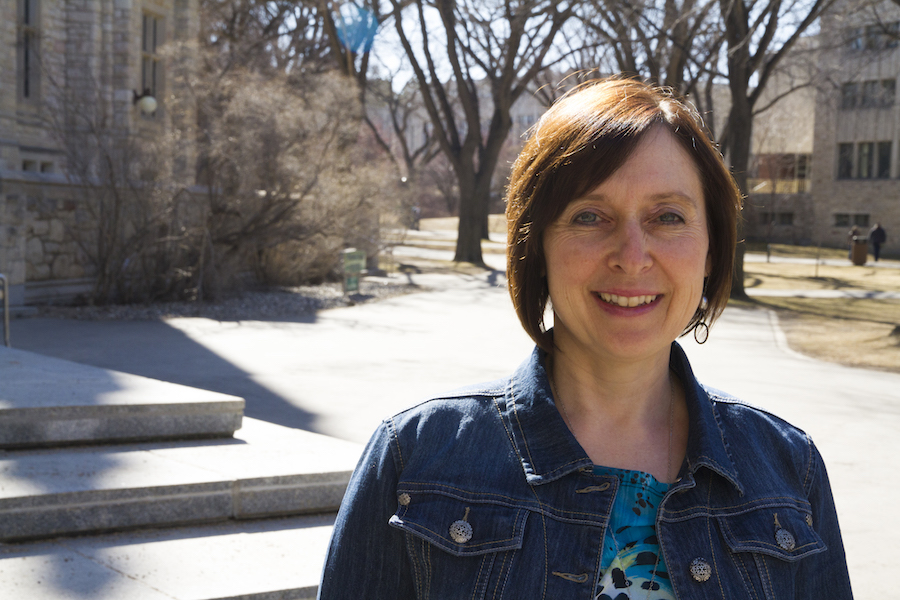
Adventures with polar bears
As the world’s largest land carnivore, a polar bear should make an easy target for a field biologist. After all, males can weigh more than 600 kilograms, stand two metres at the shoulder and be three metres long.
By Michael Robin
"The helicopter's swaying back and forth, and then of course the bear is dodging and running around," said Blum, director of Research Services and Ethics.
"If you have a good pilot to get you in position, when you're in synch, the pilot will swoop in and there's just that split second where you have that perfect shot as you're hanging out the helicopter window."
Blum was the first female polar bear field biologist in the 1990s while she was completing her PhD, and worked two years for the Government of Nunavut before taking a job in Research Services at the U of S. Under the supervision of U of S wildlife biologist Malcolm Ramsay, Blum looked at levels of industrial chemicals and pesticides such as PCBs and DDT in polar bears.
Blum explained these chemicals, widely used in the temperate latitudes, are carried north by air currents where they precipitate out into the Arctic environment. They are absorbed by ocean plankton, which are eaten by fish, who are in turn eaten by the seals that make up a large part of the polar bear diet. At each stage of the food chain, these fat-soluble chemicals become more concentrated, something exacerbated by the bears' feeding preferences.
"Polar bears prefer fat," Blum said. "If there's a lot of food—like during seal pupping—they'll just eat the head off the seal pups, because that's where the brain and the fat is and there's not much else on them. With the adult seals, they'll just strip off the fat and leave the rest of the carcass."
Finding out what kind of chemical load the bears are carrying is a major operation. A critical step is setting out fuel caches and marking them with GPS co-ordinates—the Arctic is vast, and unpredictable weather can bury these vital supplies under snow. The research team gets their gear together the night before.
Then the team sets out in the helicopter in search of bears. Once one is spotted, the pilot drops most of the researchers and gear off at a safe distance, then comes back with a team member and a dart gun loaded with sedative.
Blum, a farm girl from Simcoe, Ont. who grew up target shooting with her dad and brother and later served in the Canadian Forces Reserves, was particularly good at the job. She said that during her first research season, unbeknownst to the team, the helicopter pilot had been keeping a log book of hits and misses for all polar bear research darters.
"At the end of the season he had a bottle of champagne and he came in just clapping his hands," Blum said. "He says that out of everyone he had worked with, I had the best score."
Once the bear is down, the team gets to work weighing and measuring the animal, as well as collecting samples of blood, urine, feces, fat, milk, hair and a small clip of flesh from its ear. Depending on the projects underway, the process takes one and a half to two hours. The researchers must also be on their guard for other curious bears and sea ice conditions.
"We always had firearms with us," Blum said. "We carried handguns—a .44—and we would have a shotgun with us, then of course the dart gun."
Fortunately, extreme measures were never needed while Blum was in the field, although there were a couple of uncomfortable incidents. Once the helicopter was delayed while she was the sole person finishing up with a bear. She had to make sure she had enough sedative to keep the animal safely unconscious, while snuggling up to it to stay warm in the frigid Arctic weather.
Then there was the time they were field testing a new sedative regime.
"It worked really well in the holding facility," Blum said. "The first time we tried it in the field, we were just lifting the bear with a tripod to weigh it, and the bear lifted its head up and looked at us."
In the seconds that it took for her to grab a dart pole with more sedative, the bear had already knocked over the tripod and was on its feet. It started to run at them, oblivious to a few warning shots.
"All of a sudden his back end wavered," Blum said. "He stopped, he looked at us, he looked around and went back to our gear and he laid down and stayed there."
The helicopter arrived to find the research team far down the beach ridge, with the bear snoozing right beside their gear. The animal didn't want to move—even when the pilot nudged it with the aircraft's skid. "The bear was on one side of the helicopter and our gear was on the other, so we hopped out quick, threw in our gear and got out of there."
Blum wrapped up her field career in 2000, the same year her friend and mentor Ramsay died tragically in a helicopter crash at Resolute. At the time, he was helping a BBC television crew with a two-part documentary on polar bears; they asked if Blum would help them with the second segment. She was in Churchill when she got the call with a job offer from the U of S.
Since then, Blum has continued to share her passion for the bears through annual tours to Churchill organized through the U of S. She is preparing for the latest, a Polar Bear Ecology Tour offered through the College of Education coming up in November 2016, with information sessions coming up in June. "Everyone should experience the North," she said. "Just the beauty of the Arctic and seeing everyone in their natural habitat, the whales, the seabirds, the muskox and the bears of course. I miss that; I miss the adventure."

